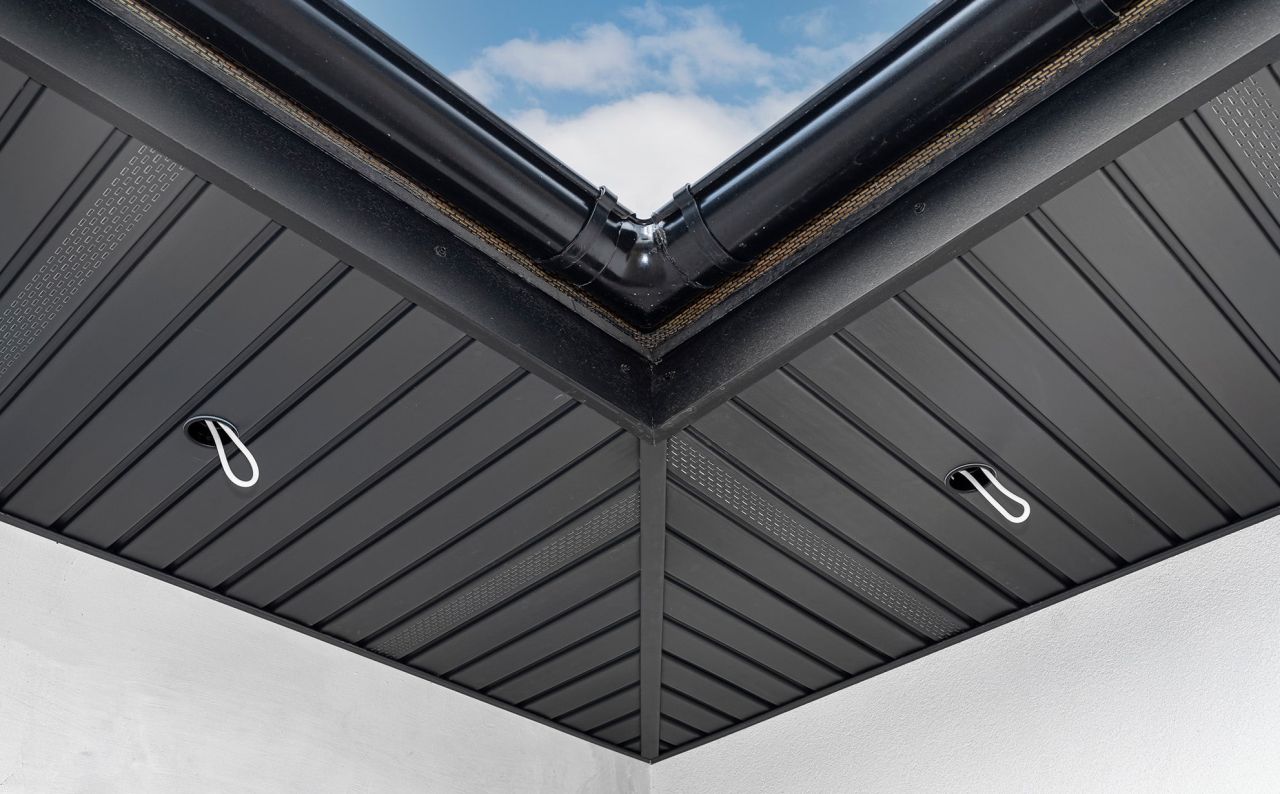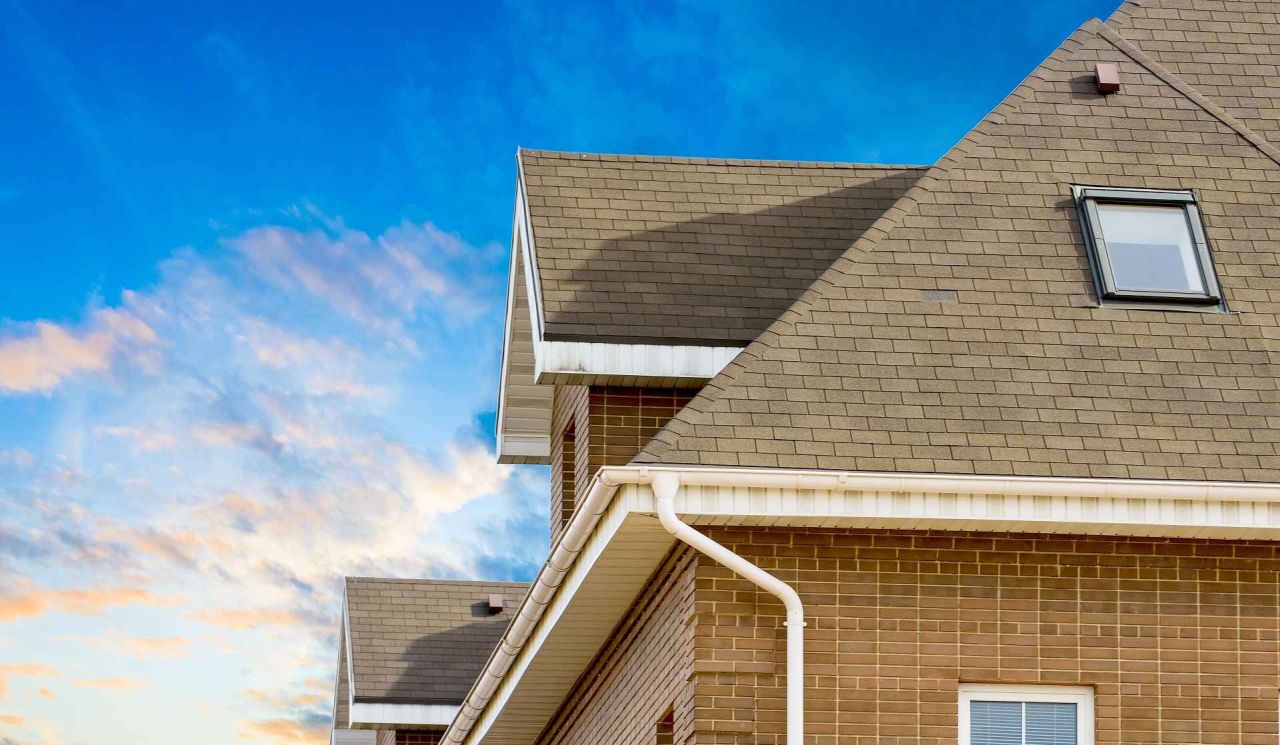If you are building a new house, buying one, or have little knowledge about home construction, you need to read this. In this article, we shed light on minuscule but important elements of the roofing system: soffit and fascia. Most homeowners focus largely on the shingles or gutters when constructing their roofs or maintaining them. It’s soffit and fascia that play a crucial role in ensuring proper ventilation and protecting the roof’s structure, so it’s not correct to neglect them.
These two roof components work together to regulate airflow into and out of the attic, which helps control temperature, prevent moisture buildup, and reduce the risk of structural damage. By maintaining healthy air circulation, the soffit and fascia not only enhance the efficiency of your home but also extend the lifespan of your roof. Understanding their role in roof ventilation is key to keeping your home safe and energy-efficient.
What Are Soffit and Fascia?
Before diving into their specific roles in roof ventilation, it is essential to understand what soffit and fascia are. Below is a brief overview of these roof components.
Soffit
A soffit is a horizontal board that connects the edge of a roof overhang to the exterior wall of a building. It is typically located underneath the eaves and is often vented to allow air circulation into the attic. Soffits can be made from various materials including, wood, vinyl, and aluminum. They play a crucial role in maintaining proper ventilation in the attic, helping to regulate temperature and prevent moisture buildup, which can lead to issues like mold and rot. Additionally, soffits enhance the aesthetic appeal of a house by providing a finished look to the roofline.
Fascia
Fascia is the vertical board that runs along the edge of a roofline, connecting the roof to the soffit. It serves multiple purposes like providing structural support for the bottom row of shingles or tiles and acting as a mounting point for gutters. Fascia boards can be made from various materials, such as wood, PVC, or metal. Besides its functional roles, fascia also contributes to the overall appearance of the home by giving a clean and finished look to the roof’s edge. Proper maintenance of fascia is important to prevent water damage and ensure the longevity of the roofing system.
What Makes Soffit and Fascia Essential Roof Components
Every roof has a ventilation system and two of the most crucial vents are located in the soffit and fascia. These vents play a key role in protecting your roof from damage and preserving its resistance to harsh weather.

They Ensure Proper Air Circulation
Airflow through the soffit and fascia is vital for maintaining a balanced temperature within your home. These vents contribute to optimal indoor air quality. The soffit vent brings fresh air into the house while the fascia helps prevent heat buildup in the attic. Positioned beneath the roof they are strategically placed to regulate airflow.
They Protect Against External Elements
Fascia located along the roof eaves act as a barrier against rain, snow, pests, and debris, preventing them from entering your home. They also prevent small animals or birds from entering the roof ventilation system.
They Extend the Roof’s Lifespan
When your soffit and fascia vents are well-maintained, your roofing system benefits too. Proper ventilation helps prevent moisture damage, which can prolong the life of your roof. Together, these vents help maintain the appearance and performance of your roofing system.
Other Benefits
The soffit and fascia work together to regulate airflow into and out of the attic, which is key to managing moisture levels and preventing damage from excessive heat or humidity. This not only helps control the temperature inside your home but also reduces the likelihood of moisture-related issues such as mold growth or wood rot.
By facilitating proper ventilation, the soffit and fascia help preserve the structural integrity of your roof and prolong its lifespan, ultimately saving homeowners money on repairs and extending the time between roof replacements. A well-ventilated roof contributes to better energy efficiency, reducing the load on your HVAC system and helping to keep utility bills in check.
Together, the soffit and fascia protect your home from weather damage while playing an integral role in the ventilation system.
How Soffit Supports Roof Ventilation
The primary role of soffits is to allow fresh air to flow into the attic. Proper ventilation is crucial for maintaining a balanced temperature and preventing moisture from building up in the attic. Without adequate flow, heat and humidity can get trapped in the attic, leading to mold growth, wood rot, and higher energy bills, as your HVAC system works harder to maintain a consistent indoor temperature.
Most modern soffits are vented, with small perforations or vents that allow air to circulate through the attic space. Cool air enters through the soffits and pushes hot, stale air out through vents or ridge vents at the top. This continuous airflow helps maintain a balanced attic temperature and reduces the risk of moisture buildup.
For this reason, keeping your soffits clean and well-maintained is essential. Blocked soffits can obstruct airflow, leading to inadequate ventilation and potential damage to the roof and attic.
Also Read: Seven Essential Ways to Create an Energy-Efficient Home
Fascia’s Contribution to Roof Ventilation
While fascia primarily serves as a structural component and support for gutters, it also plays an important role in protecting the ventilation system of your roof. By sealing off the edge and connecting to the soffit, the fascia helps prevent water, debris, and pests from entering the attic space through the roofline.
A well-installed fascia keeps moisture and animals out, ensuring soffits and attic remain unobstructed. If your fascia is damaged or deteriorating, water could seep into your attic, leading to rot, mold, and insulation damage. Over time, this can compromise your home’s ventilation system.
Benefits of Proper Roof Ventilation
Proper roof ventilation, facilitated by functional soffit and fascia, offers numerous benefits for your home:
- Prevents moisture buildup: By allowing air to flow through the attic, soffit and fascia help prevent moisture from getting trapped in the space, reducing the risk of mold and mildew.
- Regulates attic temperature: Efficient ventilation keeps the attic cooler in the summer, reducing the strain on your air conditioning system. In the winter, it helps prevent ice dams by ensuring a balanced temperature.
- Extends roof life: Properly ventilated attics reduce heat and humidity, which can degrade materials over time. This extends the lifespan and prevents costly repairs.
- Improves energy efficiency: Good roof ventilation reduces the need for excessive heating and cooling, resulting in lower energy bills.

Maintenance Tips for Soffit and Fascia
Regular soffit and fascia maintenance is critical to keep your roofing system functioning properly. Here are some maintenance tips:
- Clean gutters regularly: Clogged gutters can lead to water damage that can harm the fascia and soffits.
- Inspect for damage: Check your soffit and fascia for signs of rot, warping, or pest infestations. Any damage should be repaired promptly to prevent further issues.
- Ensure openings are clear: If your soffits are vented, regularly check that the vents are free of debris, dirt, or nests that could block airflow.
Final Thoughts
While soffit and fascia may seem like minor components of your roofing system, their roles are anything but insignificant. By facilitating proper airflow and protecting your home from the elements, these components help ensure a longer-lasting and healthier living environment. Regular inspection and maintenance are crucial for keeping everything running smoothly and safeguarding your investment for years.
Also Read: Different Types of Materials to Consider When Replacing Your Roof
FAQs About Soffit and Fascia
Q: What is the purpose of soffit and fascia?
A: Soffit and fascia are essential components of your roof’s structure that help with ventilation and protection. The soffit is located beneath the roof overhang and allows fresh air to enter the attic, while the fascia runs along the edge of the roof and supports the gutter system, keeping out rain, pests, and debris.
Q: How do soffit and fascia improve ventilation?
A: Soffit vents allow cool, fresh air to flow into your attic, while fascia vents help expel warm, humid air. Together, they regulate airflow, preventing heat buildup and moisture accumulation in the attic, which can extend the life of your roof and improve your home’s energy efficiency.
Q: How can damaged soffit or fascia affect my home?
A: Damaged soffit or fascia can lead to poor ventilation, moisture buildup, and even structural issues. Without proper airflow, your attic may trap heat and humidity, leading to mold growth, wood rot, and increased energy costs. Damaged fascia can also allow pests, rain, and debris into your home, affecting both the roof and the interior.
Q: How do I know if my soffit or fascia needs to be repaired or replaced?
A: Signs that your soffit or fascia may need attention include peeling paint, water stains, sagging sections, or visible cracks and holes. You may also notice signs of pests, such as birds or rodents nesting in these areas. Regular roof inspections can help identify problems early before they cause extensive damage.
Q: Can I clean the soffit and fascia myself?
A: Yes, soffit and fascia can be cleaned by homeowners but it is important to do so carefully. Use a soft brush or a low-pressure hose to avoid damaging the material. Regular cleaning helps prevent debris buildup and ensures the vents remain clear. However, if you are unsure or uncomfortable with cleaning high areas, hiring a professional is a safer option.
Q: What materials are soffit and fascia made from?
A: Soffit and fascia can be made from various materials, including wood, vinyl, aluminum, and composite. Each material has its benefits: vinyl and aluminum are low-maintenance and durable, while wood offers a classic aesthetic but requires more upkeep.
Q: How often should the soffit and fascia be inspected?
A: It’s recommended to inspect the soffit and fascia at least once a year, preferably during routine roof inspections. Regular maintenance helps detect and address issues early, preventing costly repairs and preserving the integrity of your roof system.
Q: Can soffit and fascia help reduce energy costs?
A: Yes, by allowing proper ventilation, soffit and fascia help regulate the temperature in your attic, reducing the strain on your heating and cooling systems. This can lead to lower energy bills and a more comfortable home year-round.
Q: How long do soffit and fascia typically last?
A: The lifespan of soffit and fascia depends on the material used and local weather conditions. Vinyl and aluminum soffit and fascia can last 20-40 years with proper maintenance, while wood may require more frequent upkeep to prevent rot and deterioration.
Q: Should I repair or replace the soffit and fascia during a roof replacement?
A: It is often a good idea to assess the condition of your soffit and fascia during a roof replacement. If they are damaged, worn, or outdated replacing them alongside the roof can enhance ventilation and protection.
Follow Homecrux on Google News!




